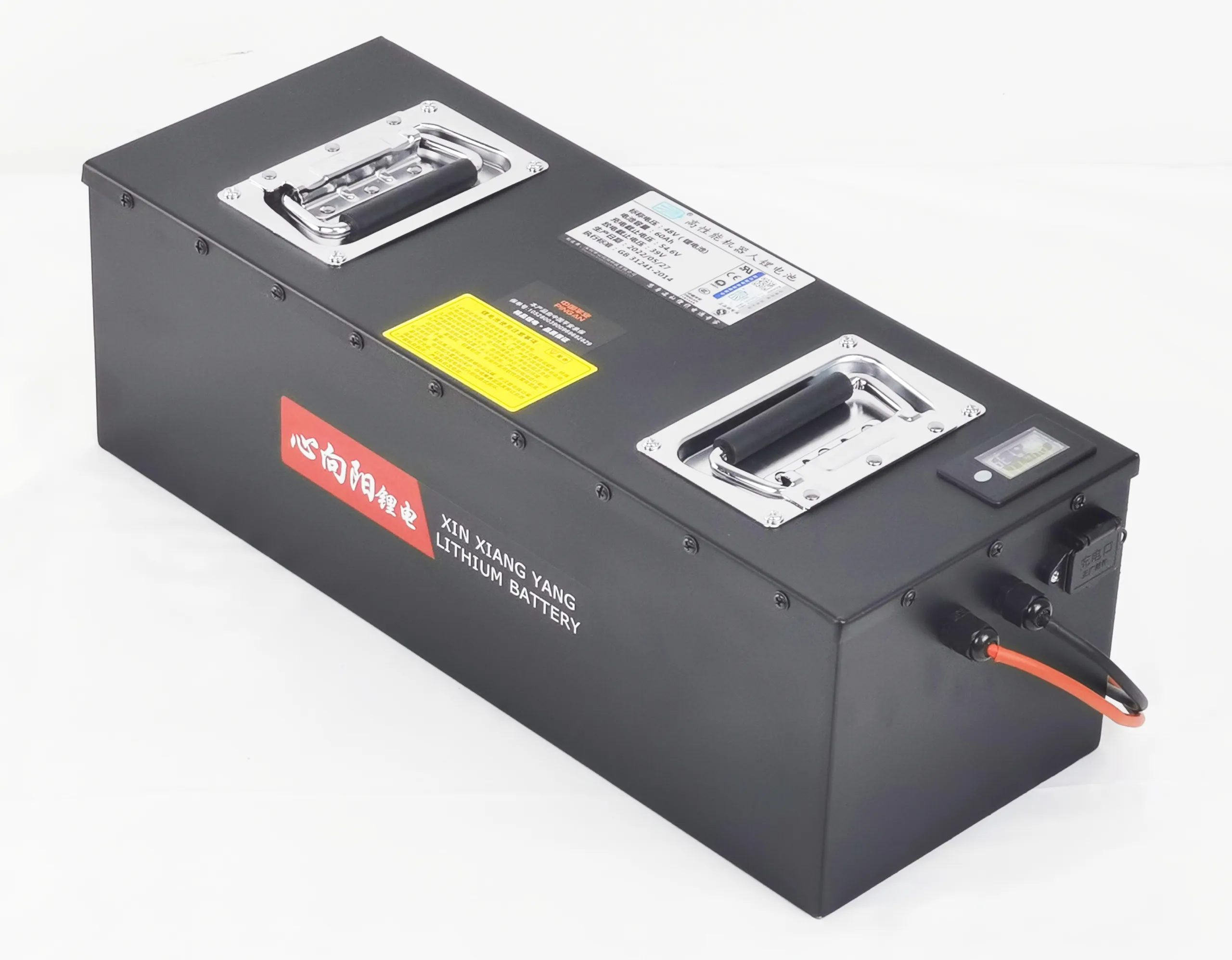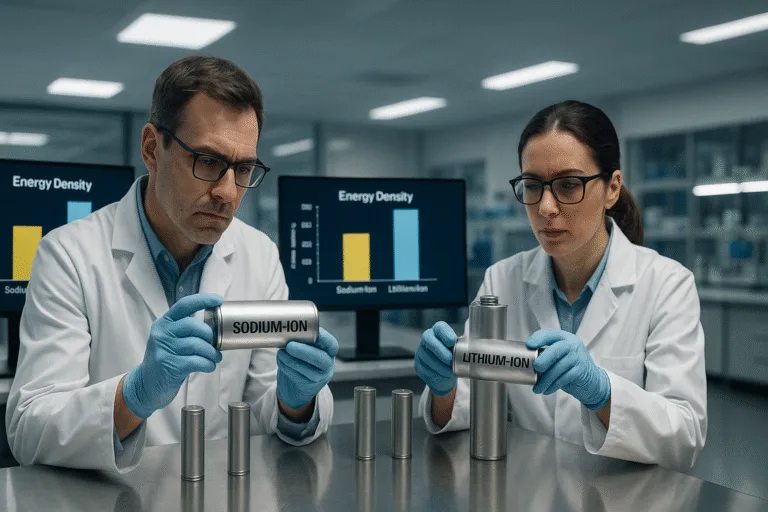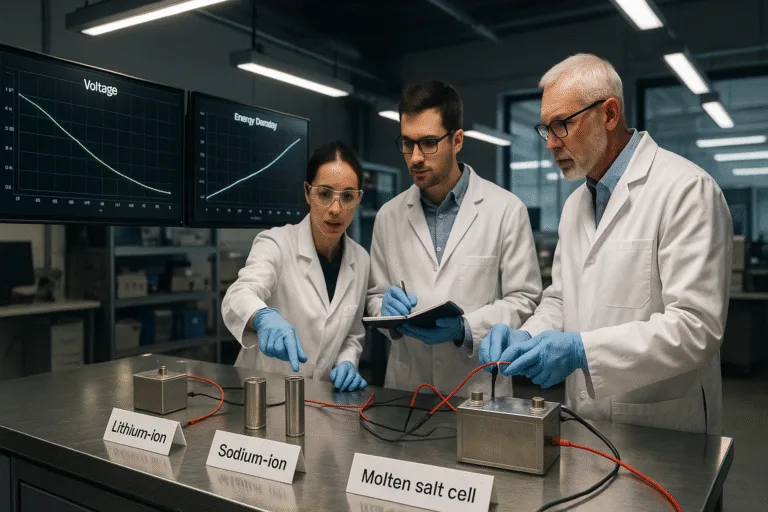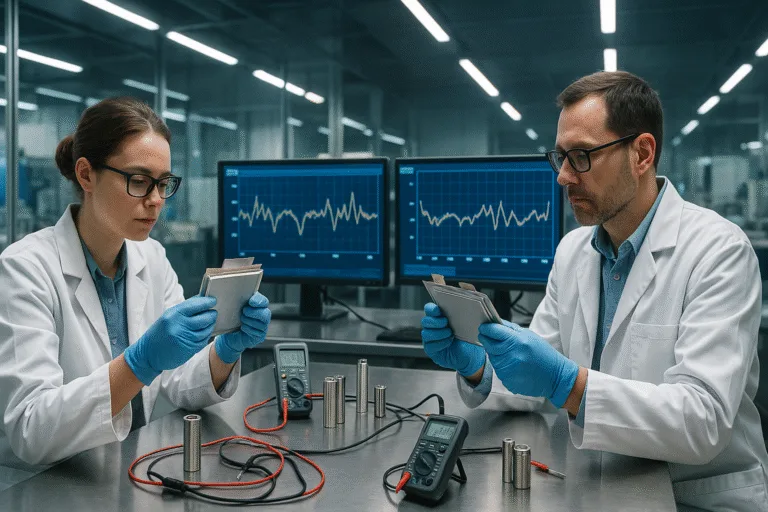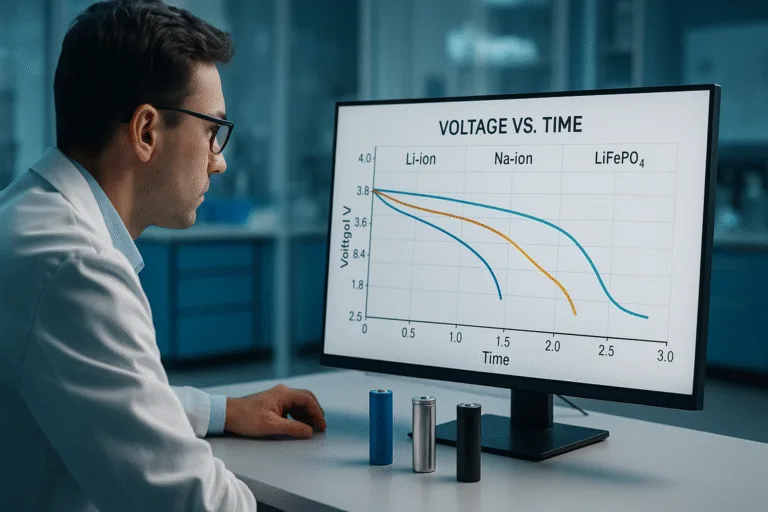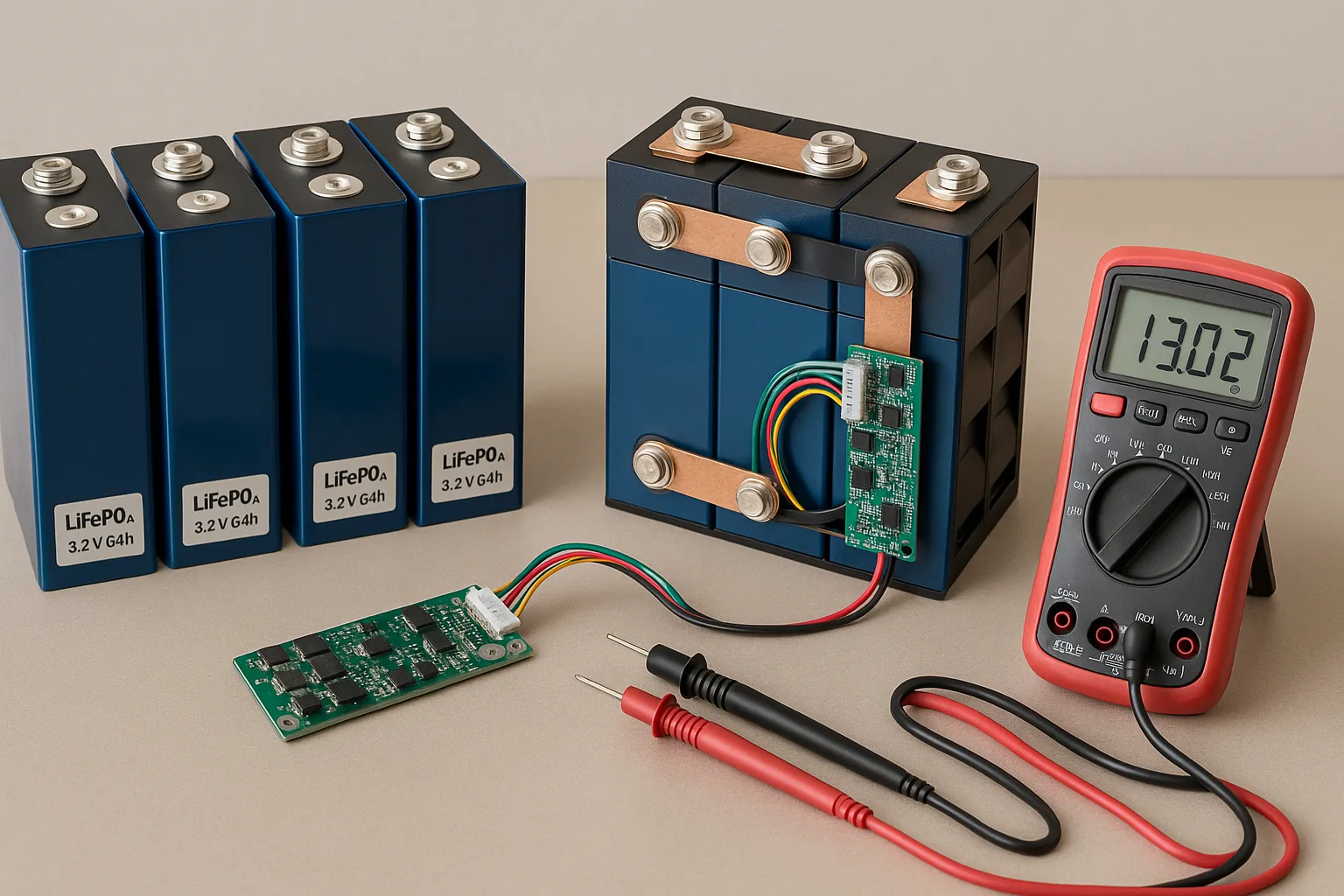
Confused about battery terms? Do you wonder if you need a single cell or a full pack? We understand that complexity. Imagine knowing exactly what powers your specific project.
A LiFePO₄ battery pack combines multiple individual LiFePO₄ battery cells connected in series, parallel, or both, to achieve desired voltage and capacity.
I used to think all batteries were the same. Then, I learned about the differences between cells and packs. This knowledge changed how I approach power solutions for my projects. Let’s explore these details together.
What is a LiFePO₄ battery cell1 and how is it different from a battery pack?
Have you ever wondered about the core of a battery system? It starts with a cell. Understanding the difference between a cell and a pack is key.
A LiFePO₄ battery cell is a single, fundamental unit that stores electrical energy, typically rated at 3.2V. A LiFePO₄ battery pack2, however, is an assembly of multiple cells wired together to meet specific voltage and capacity requirements.
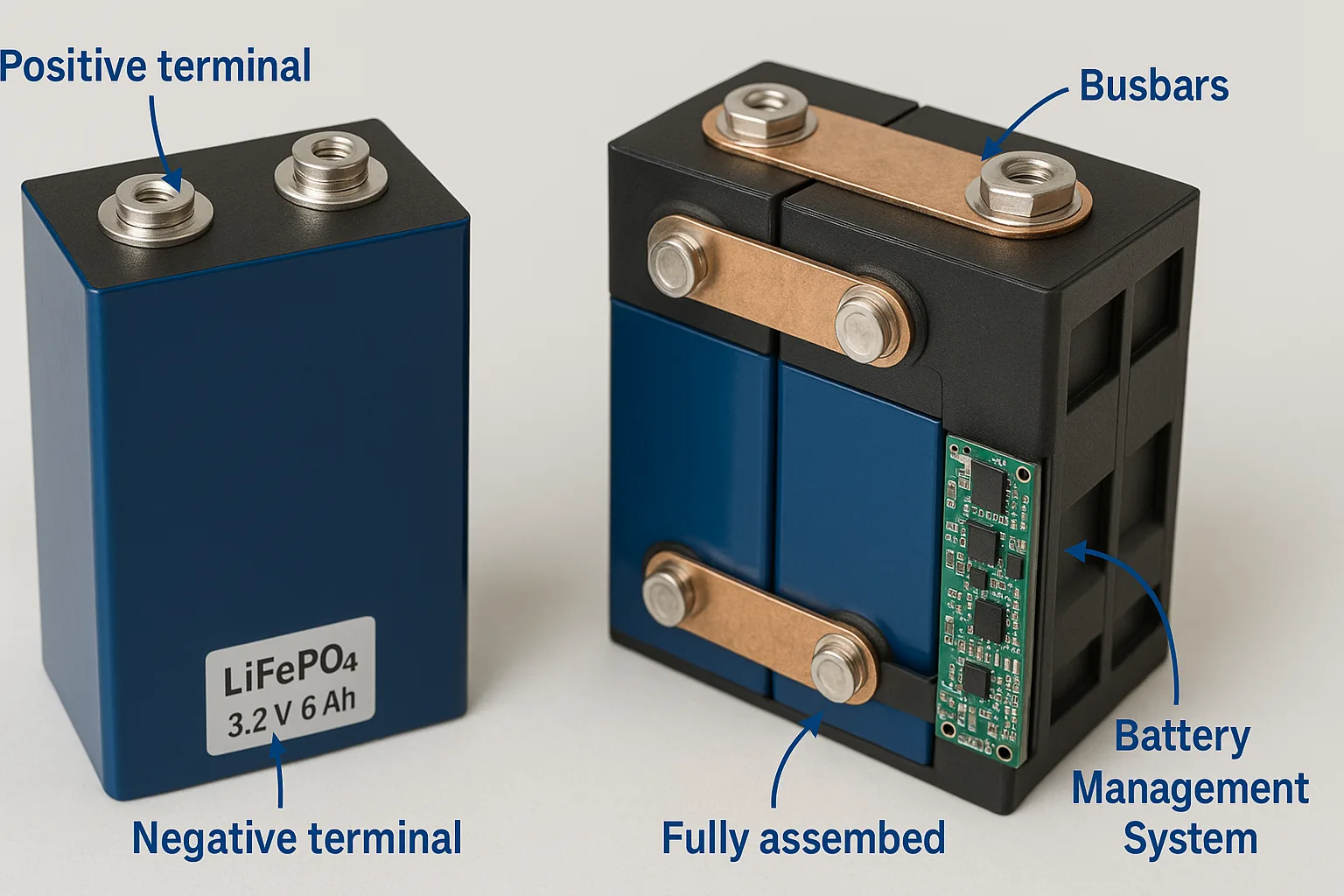
The Single Unit: LiFePO₄ Battery Cell
Think of a battery cell as a single building block. It has a positive and a negative terminal. It provides a fixed voltage, usually 3.2 volts for LiFePO₄. This single unit cannot power large devices. I have used individual cells for small projects, like a tiny LED light.
The Assembled System: LiFePO₄ Battery Pack
A battery pack is like many building blocks put together. We connect multiple cells in certain ways.
- Series Connection: Connecting cells in series adds their voltages. For example, ten 3.2V cells in series make a 32V pack. This increases the total voltage.
- Parallel Connection: Connecting cells in parallel adds their capacities. For example, two 10Ah cells in parallel make a 20Ah capacity. This increases how long the power lasts.
A battery pack also includes a Battery Management System (BMS)3. The BMS protects the cells. It balances their charge. It also prevents overcharging or over-discharging. This makes the pack safe and reliable. I always ensure our packs have a robust BMS.
| Feature | LiFePO₄ Battery Cell | LiFePO₄ Battery Pack |
|---|---|---|
| Composition | Single unit | Multiple cells |
| Voltage | Fixed (e.g., 3.2V) | Configurable |
| Capacity | Fixed | Configurable |
| BMS | Not included | Usually included |
| Use Case | Small, low-power | High-power, specific voltage |
What should I know about using individual LiFePO₄ cells for battery packs?
Are you thinking of building your own battery pack? Using individual cells needs careful steps. I want to share what is important to know.
When using individual LiFePO₄ cells for battery packs, you must prioritize cell matching4 for voltage and internal resistance, implement a robust Battery Management System (BMS), and ensure proper thermal management5 to guarantee safety and performance.

Matching Cells is Crucial
All cells in a pack should be very similar. This is called cell matching. If cells are not matched, some will wear out faster. This hurts the whole pack’s life. I always check these points:
- Voltage: Cells should have nearly identical voltage before assembly.
- Internal Resistance: Cells should have similar internal resistance. This affects how well they charge and discharge.
- Capacity: Cells should have very close capacities.
The Importance of a Battery Management System (BMS)
A BMS is vital for any battery pack. It acts as the brain. It protects each cell and the whole pack. Without a good BMS, your pack can be dangerous.
- Overcharge Protection: Stops charging when cells are full.
- Over-discharge Protection: Stops discharging when cells are empty.
- Overcurrent Protection: Prevents too much current flow.
- Temperature Protection: Monitors and controls cell temperature.
- Cell Balancing: Ensures all cells in the pack stay at similar voltage levels. This maximizes lifespan.
Proper Thermal Management
Batteries generate heat, especially during high power use. Heat can damage cells. Good thermal management keeps the pack cool. This ensures safety and extends life. I think about airflow and heat sinks in our designs.
What does a 3.2V LiFePO₄ battery6 mean and where is it used?
Do you see "3.2V" on a LiFePO₄ battery and wonder why? This voltage tells us a lot. It is the core voltage for this chemistry.
A 3.2V LiFePO₄ battery means it is a single LiFePO₄ cell with a nominal voltage of 3.2 volts. This common voltage makes it a foundational building block used in battery packs for electric vehicles7, solar energy storage8, and portable power.
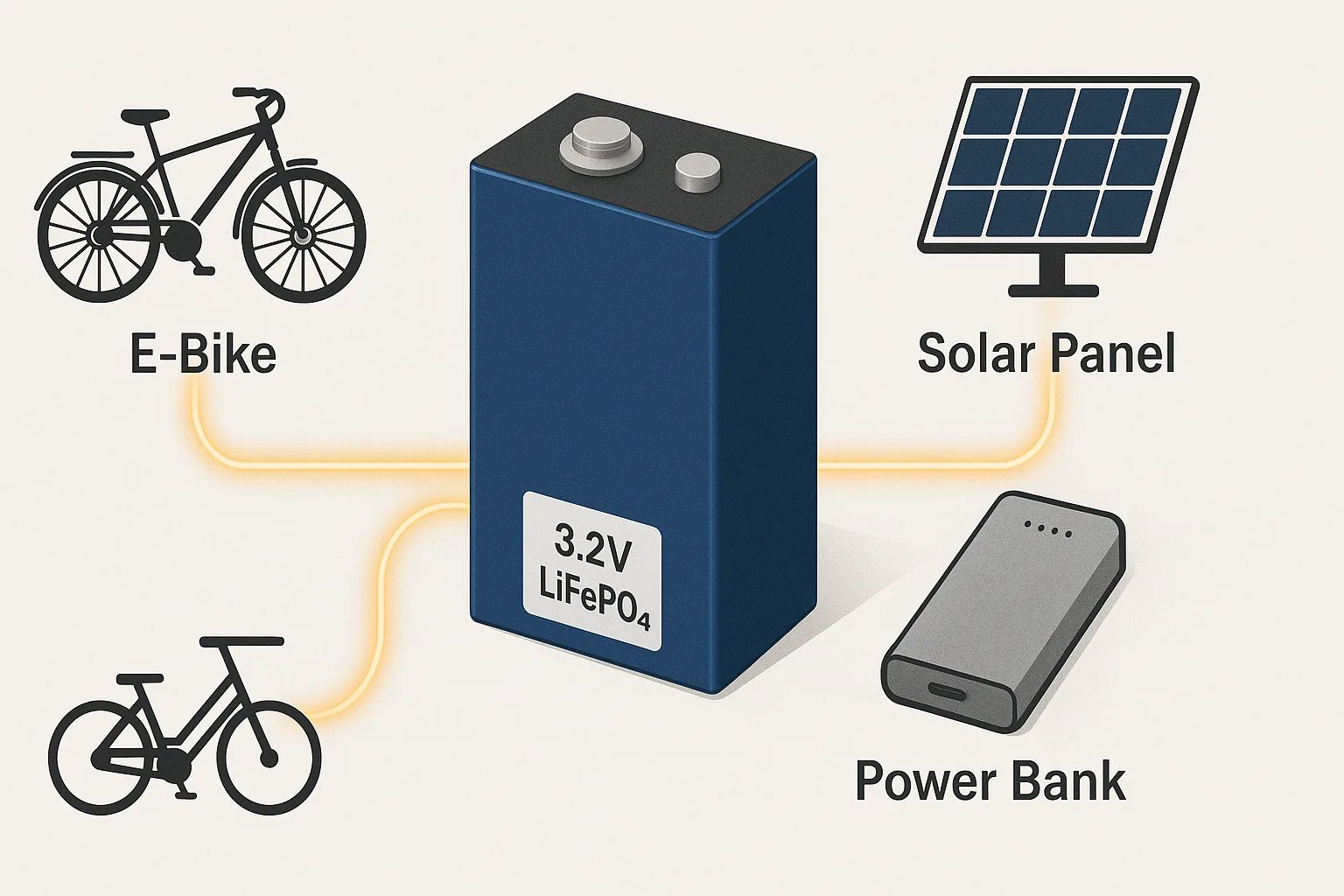
The Nominal Voltage of LiFePO₄
For LiFePO₄ cells, 3.2V is the standard. It is their nominal voltage. Other lithium chemistries, like NMC, have a higher nominal voltage, often 3.6V or 3.7V. This difference is important when designing battery packs. It impacts how many cells you need for a target voltage.
Common Uses of 3.2V Cells
Because of their stability and safety, 3.2V LiFePO₄ cells are used everywhere.
- Electric Vehicles (EVs) and E-bikes: Many cells are put together to create high-voltage battery packs for electric cars and bikes.
- Solar Energy Storage: Individual cells are combined to make large battery banks for home and grid-scale solar systems.
- RV and Marine Batteries: They power recreational vehicles9 and boats, offering long-lasting and safe energy.
- Portable Power Stations: The building blocks for power banks that you can carry.
- Backup Power: Used in uninterruptible power supplies (UPS) and emergency lighting.
What are the characteristics of a 3.2V LiFePO₄ battery cell?
What makes a 3.2V LiFePO₄ cell special? These characteristics are why it is so popular. I have seen their benefits firsthand.
A 3.2V LiFePO₄ battery cell is characterized by its excellent thermal stability, very long cycle life10, relatively flat discharge curve11, and high safety profile. These features make it highly reliable for demanding applications.
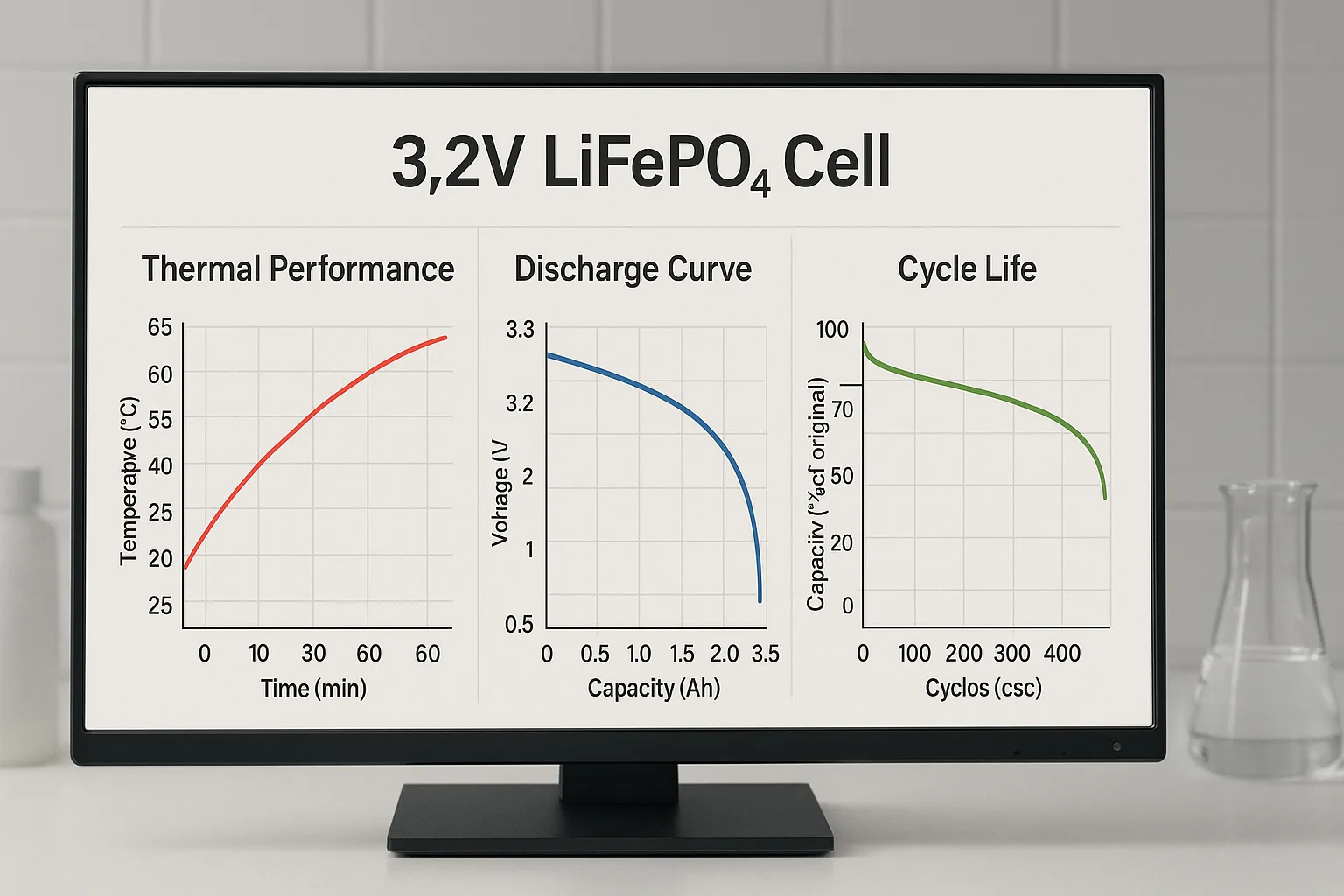
Safety First: Thermal Stability
I always prioritize safety. LiFePO₄ cells are known for their high thermal stability. This means they are less likely to overheat. They are also less prone to thermal runaway compared to other lithium chemistries. This makes them safer for many applications.
Longevity: Long Cycle Life
These cells last a very long time. They can be charged and discharged thousands of times. This saves money over time because you replace batteries less often. It also reduces waste.
Stable Power: Flat Discharge Curve
A flat discharge curve means the voltage stays stable for most of the discharge cycle. This is good for electronics. It means your device gets consistent power until the battery is almost empty. You don’t see a sudden drop in performance.
Other Key Features
- Fast Charging: They can accept high charge currents. This means quicker recharge times.
- Wide Operating Temperature: They perform well in both cold and hot environments. (As discussed in the previous article).
- Environmentally Friendly: They use safer materials and do not contain cobalt.
What makes the 21700 LiFePO₄ battery12 suitable for high-power applications?
Why do many high-power devices use 21700 LiFePO₄ batteries? This specific size offers unique benefits. I think it is an excellent choice for demanding projects.
The 21700 LiFePO₄ battery is suitable for high-power applications due to its optimized balance of energy density13, power output14, and thermal performance within a compact form factor. Its larger size allows for greater capacity and better heat dissipation15 compared to smaller cells.
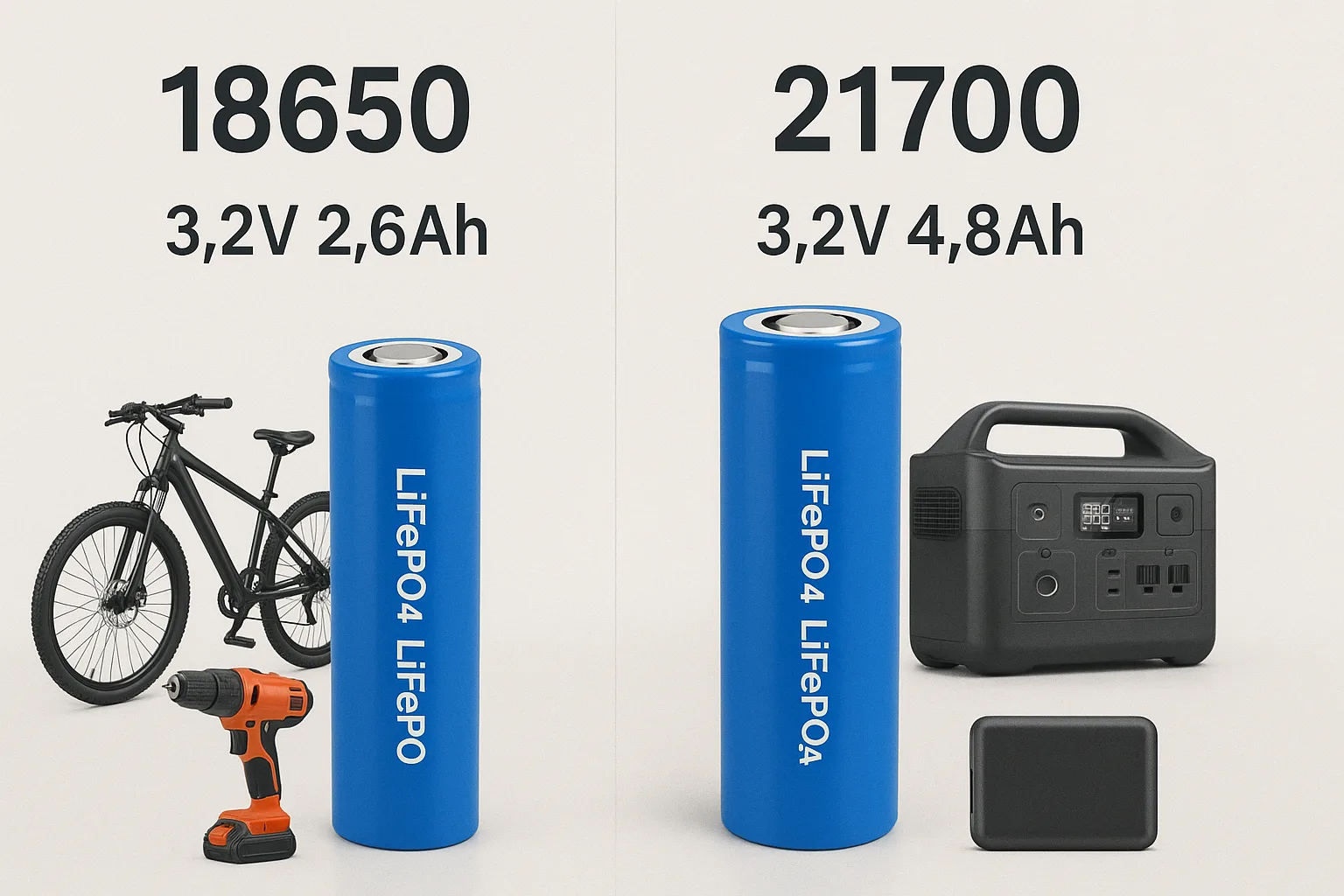
Understanding the 21700 Form Factor
The "21700" refers to the cell’s dimensions: 21mm in diameter and 70mm in length. This size is larger than the common 18650 cell. The increased volume allows for more active material inside. This translates to higher energy storage.
Balance of Energy and Power
The 21700 form factor strikes a good balance. It offers:
- Higher Capacity: More energy can be stored in each cell. This means fewer cells are needed for a given capacity.
- Higher Power Output: It can deliver more current without significant voltage drop. This is crucial for applications that need a lot of power instantly, like electric vehicles or powerful tools.
- Good Thermal Performance: The larger surface area helps with heat dissipation. This means the cell stays cooler during high-power discharge. This increases safety and lifespan.
Why It Excels in Demanding Uses
I see 21700 LiFePO₄ cells used in many demanding areas.
- Electric Bikes and Scooters: They provide the necessary power for strong acceleration and long range.
- Electric Vehicles: They are a core component in many EV battery packs, offering a good balance of cost, safety, and performance.
- Power Tools: Cordless drills and saws benefit from their high current delivery16.
- Portable Power Stations: They allow for powerful, yet relatively compact, portable power solutions.
Conclusion
LiFePO₄ cells are fundamental units. Battery packs combine them for specific power needs. Understanding cell types like 3.2V and 21700 is key. They offer safe, reliable power for many uses.
-
Explore this link to understand the fundamental unit of energy storage and its significance in battery technology. ↩
-
Learn about the assembly of multiple cells into a battery pack and its applications in various devices. ↩
-
Discover the critical role of BMS in ensuring battery safety and performance. ↩
-
Understand the importance of matching cells for optimal battery performance and longevity. ↩
-
Explore how effective thermal management can enhance battery safety and lifespan. ↩
-
Find out the significance of the 3.2V rating and its applications in various industries. ↩
-
Discover the role of LiFePO₄ batteries in powering the future of electric transportation. ↩
-
Learn how LiFePO₄ batteries are revolutionizing solar energy storage solutions. ↩
-
Discover the benefits of using LiFePO₄ batteries in RVs for reliable and long-lasting power. ↩
-
Learn how the longevity of LiFePO₄ batteries can save costs and reduce waste. ↩
-
Discover how a stable voltage output enhances device performance during battery use. ↩
-
Explore the advantages of the 21700 form factor in high-demand energy applications. ↩
-
Understand how energy density impacts the efficiency and capacity of battery systems. ↩
-
Learn about the significance of power output in applications requiring high energy demands. ↩
-
Explore the mechanisms of heat dissipation and its role in battery safety and performance. ↩
-
Understand the significance of high current delivery in applications like power tools and EVs. ↩

